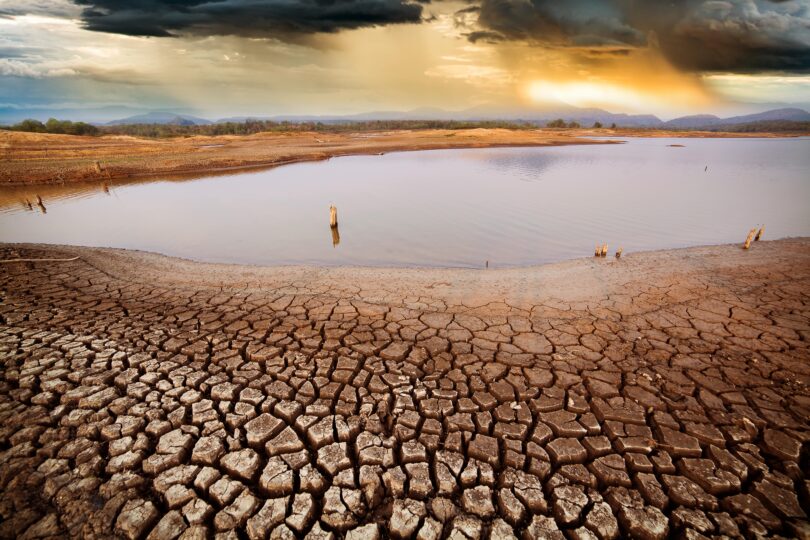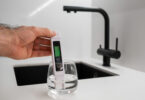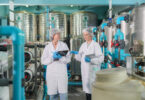As the global population continues to rise at an accelerated rate, the solution to the water crisis is becoming more critical to access clean water. This growing water crisis threatens our health, economies, and political stability. While the challenges seem immense, practical and innovative solutions are within our reach if we have the will to implement them. Through improved infrastructure, conservation practices, and new technologies, we can provide universal access to clean water and ensure water security for future generations. By working together across borders and sectors, we can solve this crisis and build a sustainable future for all. The path forward is clear if we choose to take it.
Understanding the Water Crisis
The water problem is caused by various issues, including overuse, climate change, pollution, and poor water management. As populations grow and industrial needs rise, water resources deteriorate faster than they can be restored naturally. Climate change exacerbates water scarcity by altering rainfall patterns and causing extended droughts in previously water-rich places.
Water pollution is another major concern, as industrial waste, agricultural runoff, and untreated sewage affect freshwater sources. Addressing the underlying causes is critical to establishing long-term solutions to the water situation.
Effective Solutions to the Global Water Crisis
1- Improving Water Conservation
Water conservation is critical for addressing water scarcity. Individuals, companies, and agriculture must all embrace sustainable water-use methods to reduce waste. Water-saving measures such as drip irrigation in agriculture, low-flow fixtures in homes, and water recycling in industrial processes all help to reduce water consumption and avert shortages.
2- Expanding Access to Clean Water Technologies
Clean water solutions, such as desalination facilities, filtration systems, and UV purification units, can supply dependable sources of safe drinking water. Desalination, which converts seawater to drinking water, is especially successful in coastal settings. Advanced filtration and purification technology can improve water quality in contaminated neighborhoods, allowing millions of people access to clean water.
3- Protecting and Restoring Natural Water Sources
Preserving natural water sources, such as rivers, lakes, and groundwater reservoirs, is critical for long-term water supply. Water scarcity solutions entail safeguarding these ecosystems from contamination and misuse. Furthermore, forestry and wetland restoration contribute to the natural water cycle by increasing groundwater recharge and decreasing surface runoff.
4- Implement Water Management Policies
Strong water management policies can help governments and communities better regulate and allocate water resources. Policies aimed at water conservation, pollution control, and sustainable agriculture are critical for tackling the water crisis and its solutions. Local governments can create regulatory frameworks to manage water usage, enforce pollution control, and encourage environmentally friendly practices.
5- Promoting Sustainable Agriculture
Agriculture is a major consumer of freshwater. Switching to sustainable farming methods, such as rainwater gathering, crop rotation, and drought-tolerant crops, can help to minimize agricultural water usage. These solutions to water constraints contribute to food security while protecting scarce water resources.
6- Community Education and Awareness
Education is critical for addressing global water scarcity. Raising awareness about water conservation, pollution avoidance, and sustainable practices motivates communities to act. Community programs can help people understand the necessity of decreasing water waste, lowering pollution, and supporting clean water initiatives.
Water Conservation Methods to Implement
Individuals and communities must implement prudent water management practices to conserve this precious resource effectively.
Reduce Usage
Reducing overall water usage is key. Turn off the faucet when not in use and take shorter showers. Only run full loads in the dishwasher and washing machine. Fix any leaky faucets, which can waste gallons of water per day.
Reuse Water
Reuse water for secondary purposes, like watering plants or washing vehicles, where possible. Place a bucket to collect water in the shower as it heats up. Reuse pet water bowls, fish tank water, and leftover water from boiling vegetables to water houseplants.
Rainwater Harvesting
Install a rain barrel to collect rainwater runoff from rooftops for watering lawns and gardens. Larger-scale rainwater harvesting systems can also be implemented in communities. The collected rainwater can be used for irrigation and, in some cases, for potable water.
Drought Resistant Landscaping
Choose native, drought-tolerant plants for landscaping that require little irrigation. Group plants with similar light and water needs together for efficient watering. Mulch around plants and garden beds to help the soil retain moisture.
Implementing water conservation methods at individual and community levels can significantly reduce residential water usage. Every small change helps, so start implementing these best practices today to do your part in solving the global water crisis. Together, we can make a difference through mindful and judicious use of this life-sustaining resource.
Advancing Water Infrastructure and Technology
Significant investment in modern water infrastructure and technologies is required to solve the developing water shortage. Aging and obsolete systems cause significant water loss due to leaks, inefficiency, and corrosion, resulting in lost resources and higher expenses.
Updating Water Pipes and Plumbing
Many municipal water systems rely on pipelines over 50 years old, frequently far beyond their expected lifespan. These aging pipes are prone to cracks, corrosion, and leaks, losing up to 25-30% of treated water before it reaches customers. This figure may be even higher in some regions, especially in older cities. Replacing decaying pipes with newer, leak-resistant materials like high-density polyethylene (HDPE) or PVC has shown to be a dependable method of reducing water loss.
The Future of Water Infrastructure: Efficiency and Sustainability
Another emerging trend is adopting “smart” infrastructure, which includes sensors, real-time monitoring, and data analytics to detect leaks early and reduce waste. Investing in these innovations is expensive, but the long-term economic, environmental, and social benefits make this approach critical to sustainable water management.
Adopting Efficient Appliances and Fixtures
In addition to improving water delivery systems, we must update the technologies that utilize water in businesses and homes. Water-efficient appliances like low-flow showerheads, toilets, washing machines, and dishwashers can minimize excess water usage. For example, replacing one standard toilet with a WaterSense-certified high-efficiency model can save a family of four up to 13,000 gallons of water each year.
Over time, advances in water infrastructure and technologies and the widespread adoption of efficient systems and appliances will significantly decrease residential and commercial water demand. However, these solutions require investments from local governments, water utilities, and individuals to implement. While the costs may seem high initially, improved water efficiency’s long-term economic and environmental benefits are substantial. Overall, upgrading our water systems and how we use this resource is crucial to ensuring sustainable access to clean water for future generations.
The Value of Water Efficiency for Future Generations
Upgrades to our water systems and the adoption of efficient practices are critical steps toward preserving future generations’ access to clean water. Climate change and growing populations are boosting water demand, making these advances more critical than ever. Adopting efficient water systems and appliances on a large scale will help secure water resources, protect ecosystems, and allow populations to thrive even in water-stressed areas.
Conclusion
You now have a solution to one of the world’s most pressing issues in front of you. From adopting solutions for water scarcity in agriculture to investing in clean water solutions and safeguarding natural resources, each action adds to a world where everyone can access safe, clean water. Every drop of water matters in this effort, so start by making small changes in your daily life to reduce waste and raise awareness about this critical cause. Together, we have the power to provide clean water access for all. The next time you sip refreshing, life-giving water, remember that it is a privilege, not a given. And remember that you can help others access this basic human right. The solution is here; the time for action is now. Our planet’s future depends on the steps we take today. Be part of the solution.








